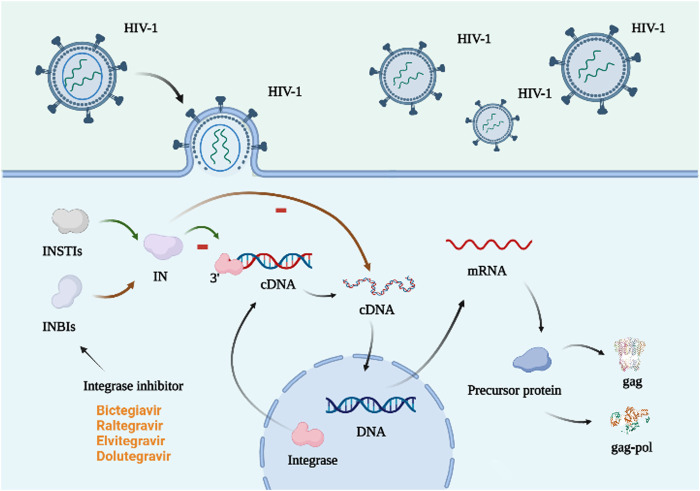FIGURE 4.
Mechanism of action of integrase inhibitors. The integrase is in the host cell and attaches to the 3′ end of the virus DNA, initiating the integration of the viral cDNA into the host DNA, which in turn is transcribed to form the precursor protein. This process requires a functionally intact integrase and the integrity of the last 10–20 base pairs at both ends of the viral cDNA (Aquaro et al., 2020). There are two types of integrase inhibitors: INSTIs and INBIs. The former attaches to the catalytic core domain of the integrase and prevents the enzyme from binding to DNA. The latter binds to the heterologous pocket of IN and hinders the conformational changes required for the strand transfer reaction (Trivedi et al., 2020). Created with BioRender.com.

